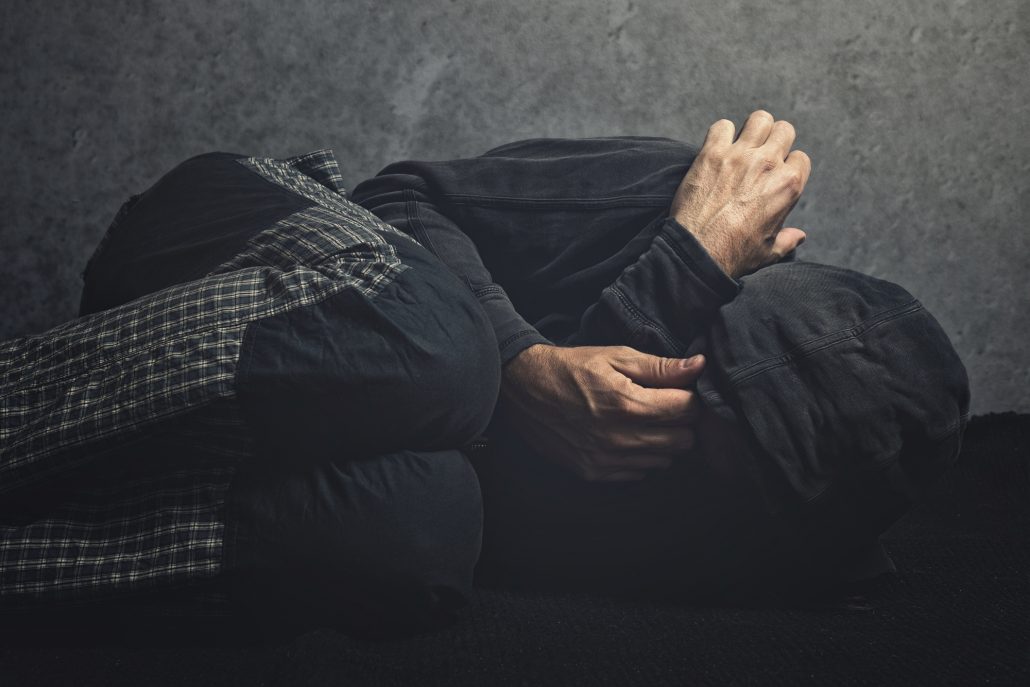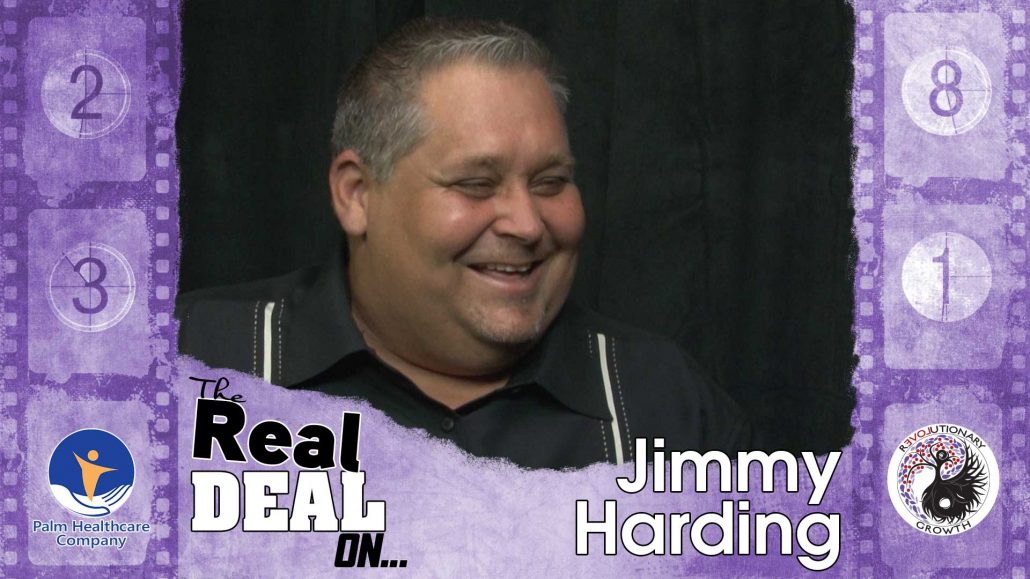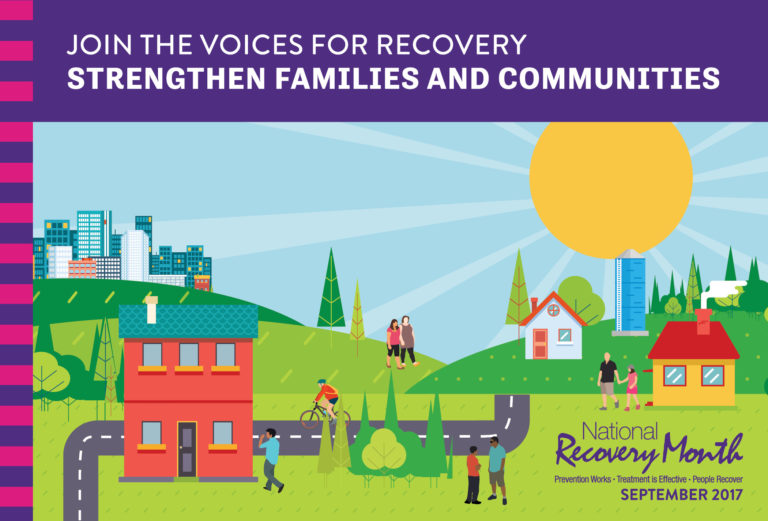by Justin Mckibben | Oct 13, 2017 | Depression, Dual Diagnosis, Mental Health, Mental Health Stigma, Panic Disorder, Post-traumatic Stress Disorder, Recovery, Suicide, Therapy, Veterans

(This content is being used for illustrative purposes only; any person depicted in the content is a model)
When we talk about fighting the addiction problem in America and better understanding substance use disorder, we have to acknowledge those who are at a specific risk for suffering from substance use. Far too many American soldiers come home only to fight another devastating, heartbreaking battle.
With addiction being considered a mental health issue, it should be clear the contribution of overall mental health makes to causing substance use disorder (SUD) in many cases. Depression, bipolar disorder, generalized anxiety disorders and post-traumatic stress disorder (PTSD) are all mental health issues that often associated with addiction.
Some of those susceptible to mental health disorders and substance abuse are those who fight for the safety and freedom of our country; our Veterans. So we need to acknowledge the mental health issues that the men and women who sacrifice everything for this nation are suffering through. We need to talk about how to best understand these conditions, and how to best treat those in need.
Veteran Mental Health Disorder Statistics
According to the RAND Center for Military Health Policy Research:
-
20% of Veterans who served in either Iraq or Afghanistan suffer from either major depression or PTSD
-
5% of Veterans in these two categories have suffered a traumatic brain injury
According to the U.S. Department of Federal Affairs:
-
More than 2 out of 10 veterans with PTSD also suffer from SUD
-
In the wars in Iraq and Afghanistan, about 1 in 10 returning soldiers seen in VA have a problem with alcohol or other drugs.
-
Almost 1 out of every 3 Veterans seeking treatment for SUD also has PTSD.
-
War Veterans with PTSD and alcohol problems tend to be binge drinkers.
-
Among all U.S. adult deaths from suicide, 18% (7,403) were identified as Veterans of U.S. military service
Probably one of the most troubling statistics comes from a study by the Substance Abuse and Mental Health Services Administration (SAMHSA) which tragically revealed:
Only 50% of returning vets who need veteran mental health treatment will receive these services.
That is an extremely troubling number. It says a lot about how Veterans are struggling to get the help they need when you realize that only around half of them ever get it.
Veterans and Substance Abuse
One of the hardest issues to address when examining the veteran mental health issue is substance abuse and SUD. It is also one of the most important aspects of Veteran mental health treatment that need to be acknowledged.
The National Institute on Drug Abuse (NIDA) reports that substance abuse among veterans is strongly connected to their experiences in combat and how they struggle to cope with these traumas. Various NIDA studies indicate that:
-
25% of Veterans returning from Iraq and Afghanistan showed signs of SUD
-
In 2008, active duty and veteran military personnel abused prescription drugs at a rate that was more than twice the rate for the civilian population
-
In 2009, the VA estimated that around 13,000 vets from Iraq and Afghanistan suffer from alcohol dependence syndrome and require veteran mental health treatment for this problem.
PTSD and SUD
A lot of people, even those who are not Veterans but have experienced great trauma, use substances to self-medicate and deal with PTSD. Even for those who have never had an issue with substances or may never have even used substances, PTSD increases the risk an individual can develop a drinking or drug problem or SUD.
To make matters worse, PTSD and SUD can likely lead to other problems in life, including health. These Veteran mental health issues can often be associated with:
Ultimately, using drugs or alcohol in combination with PTSD might seem to make things easier, but will actually make them a lot worse. It creates a vicious cycle of numbing and re-traumatizing.
Better Treatment for Veteran Mental Health and Addiction
Many advocates for Veteran services, including the National Veterans Foundation (NVF), believe:
- More funding needs to be allocated for Veteran mental health care services so that every veteran has easy access to this type of care.
- Excessive wait times at local VA facilities need to be addressed in order to grant people the access they need to these services.
The NVF website states:
“We can no longer look the other way or continue to underfund the mental health care system that our veterans use.”
This should absolutely be a priority. Strengthening the system that provides mental health care not just to citizens who are suffering, but to our vets who have given so much and desperately need help, is crucial to saving lives from substance use disorder.
Not only does Palm Healthcare Company understand the importance of providing quality addiction recovery treatment, but we also know how important dual diagnosis treatment is for those who suffer from serious mental health conditions like PTSD or major depression along with addiction. Better treatment means addressing both conditions simultaneously, to help the individual heal holistically.
Palm Healthcare Company also knows how important it is to help those first responders and Veterans that put their lives on the line every day. That is why we are a proud sponsor of the Harrigan Foundation’s Annual Run to the Rescue 5K to raise money for the treatment of first responders and veterans.
To find out more about this event, visit the link here:
Harrigan Foundation’s Annual RUN TO THE RESCUE 5K
Mental health care and addiction treatment for vets is an important resource that can save lives and our veterans put their lives back together after experiencing trauma and hardship that causes PTSD and the devastation of substance abuse. If you or a loved one is struggling, you don’t have to fight alone. Please call toll-free now.
CALL NOW 1-888-922-5398
by Justin Mckibben | Oct 6, 2017 | Anxiety Disorder, Death, Depression, Dual Diagnosis, Mental Health, Mood Disorders, Prescription Drugs, Recovery

There are many national observances every month, all year round, that remind us of issues that may not always be on the forefront of our minds. These issues are typically not something everyone will put much thought into each day, but when we pause to acknowledge them for a few days at a time we may realize these are real problems that affect real people every single day. Some of these issues go unseen, like mental health disorders. One of these observances for the month of October is National Antidepressant Death Awareness Month.
If you never realized this was an actual observance, then that is kind of the point. The fact that this is enough of an issue to acknowledge for one month out of a year should speak volumes. The fact a lot of people don’t even realize it is happening says a lot too.
Let us be clear: this article is NOT to discredit or denounce the use of antidepressant medications. It is simply to acknowledge the importance of awareness and education.
So what does this observance mean?
#AntidepressantDeathAwarenessMonth
The purpose of National Antidepressant Death Awareness Month is to remember those who have been injured or killed as a result of antidepressant use. Part of this commemoration is to urge people to always report any adverse reactions while taking any drugs to the FDA, especially in cases that end in death. Depression is a common mental health disorder in the United States. In fact, recent data shows:
- More than 300 million people suffer from depression globally
- Approximately 16 million adults in the US had at least one major depressive episode in 2012
- Depression is the leading cause of disability worldwide
- 11% of adolescents have a depressive disorder by age 18
- 10%-20% of new moms will experience postpartum depression
- 30% of college students report feeling depressed enough it disrupted their performance in school
- 50% of Americans with major depression don’t seek treatment
Needless to say, depression is a prominent condition that impacts a lot of people across America. So of course, antidepressant medications are a valued resource in mental health treatment. However, excessive use of antidepressant medications or dependence on these drugs can lead to some devastating consequences.
Too often people joke about needing to “pop a Prozac” or “borrow a Zoloft” to relax, but these medications are nothing to play around with.
Antidepressants and Suicide
In 2016 reports came out about a suicide epidemic in America. According to the World Health Organization suicide was the 3rd leading cause of death in 2015, representing a 60% increase worldwide over 45 years! A report from the Center for Disease Control and Prevention (CDC) found an estimated 9.3 million adults in the United States (3.9% of the adult population) reported having suicidal thoughts in that past year.
With such shocking statistics, researchers decided to examine data on suicides and the antidepressants associated with some cases. Of most of the medications the most disturbing revelations were those for:
- Selective Serotonin Reuptake Inhibitors (SSRIs)
- Serotonin-norepinephrine Reuptake Inhibitors (SNRIs)
The review revealed that these antidepressants actually seemed to double the rate of suicide and aggressive behavior for adolescents and young people under the age of 18.
So drugs intended to treat depression actually increased risks of harmful side-effects. But even more disheartening is the fact the Big Pharma companies behind these medications were documenting “serious underestimation of the harms.” Meaning they believe drug makers misreported their findings from case studies. In many cases, researchers concluded more serious side-effects were being recorded as something else.
Side-Effects of Antidepressants
Antidepressant drugs can be very useful, but they are still drugs and should always be taken seriously. Not only can antidepressants be detrimental to emotional stability, but they cause various physical side-effects as well.
Some of the more common side-effects of antidepressants include:
- Anxiety
- Agitation
- Blurred vision
- Constipation
- Dizziness
- Nausea
- Increased appetite
- Weight gain
- Sexual dysfunction
- Fatigue
- Insomnia
- Dry mouth
- Irritability
There are other more serious health concerns that certain antidepressant drugs can contribute to as well, including:
Depending on the particular substance, some of these adverse effects of symptoms may differ. One should always speak with their doctor about the possible adverse effects of any medication and be sure to discuss all treatment options.
Be sure to consult your doctor before discontinuing any medications as well. Some of these medications can cause adverse effects when abruptly discontinued. Again, the point of this conversation is not to scare anyone away from antidepressant medications; it is simply to encourage anyone who may be taking these kinds of medications to be aware and make informed decisions with the help of your doctor.
Antidepressant Dependence
The connection between antidepressants and addiction isn’t as clear as other drugs. Doctors still debate the addictive nature of antidepressant medications, with most considering them non-addictive. However, it is possible to develop a dependence on antidepressants.
Antidepressant medications alter the brain’s chemical activity. So a lot of people use antidepressants excessively because they feel like they cannot function normally unless chemical changes in their brain activity take place. So while antidepressants may not be as addictive as other narcotic medications, people can depend on the drug to feel ‘normal’.
Antidepressant dependence commonly forms in people who never needed the drug for medical reasons. Some people receive an incorrect diagnosis of depression and thus end up on antidepressants. According to one study, doctors misdiagnosed almost 2/3 of patients with depression and prescribed unnecessary antidepressants. Still, others will abuse antidepressants for a psychostimulant-like effect.
The use of the drugs also becomes even more dangerous when combined with alcohol. People suffering from addiction to other drugs, including alcohol, also run a higher risk of abusing their antidepressants.
Combining alcohol and antidepressants can cause problems such as:
- Worsened depression or anxiety
- Intense sedation
- Dangerously high blood pressure
- Impaired coordination
- Overdose
Abuse of antidepressants can lead to overdose. Symptoms of antidepressant overdose often include:
- Impaired coordination
- Confusion
- Fainting
- Uncontrollable shaking
- Dizziness
- Irregular heartbeat
Safety before Stigma
Of course, no one should ever be afraid or embarrassed about taking an antidepressant medication. That kind of assistance can be an essential piece of someone’s balance in life, and there is no judgment.
In the realm of recovery from drug or alcohol addiction, it is important for people to understand the difficulties that others may face and accept that medical assistance might be necessary for some people to safely and comfortably grow while letting go of other dangerous substances. As long as people are willing to be mindful of how a medication effects them and take appropriate steps to protect themselves, recovery with the help of antidepressants is absolutely possible.
Approximately one in every eight adults in America take antidepressants, which are among the most commonly used medications. These medications can be life altering and important to overall health, but they must be taken seriously. This month we remember all those who have suffered through depression and been adversely affected by antidepressants. We remember those who lost their lives due to complications related to antidepressant medications, and we strive for better understanding and use of these medications to preserve lives.
Abusing prescription medications like antidepressants is extremely dangerous, and if you are trying to overcome an addiction or mental health disorder this can put you in even more danger. Getting the right kind of treatment can make all the difference. If you or someone you love is struggling, please call toll-free now.
CALL NOW 1-888-922-5398
by staff | Aug 24, 2017 | Addiction Treatment, Depression, Detox, Dual Diagnosis, Mental Health, Mood Disorders, Outpatient Treatment

Holistic methods of drug and alcohol addiction treatment are so effective because they are designed to heal all the unique aspects of an individual’s life. This style of comprehensive care delivers empowering and personalized recovery strategies to help each person find their way to a lasting transformation. Holistic addiction treatment doesn’t just save a life; it helps people to discover a new quality of life in recovery.
Part of creating a customized plan of recovery means making a complete appraisal of the individual’s needs and how best to serve them in a healthy and productive environment. Part of the initial assessment includes what some refer to as the Addiction Severity Index (ASI).
Every program may not use the term Addiction Severity Index directly. However, an intake assessment is always a critical step toward a comprehensive treatment. So what is the ASI and why does it matter?
What is the Addiction Severity Index?
The ASI is a semi-structured interview with an individual seeking care for issues with substance abuse. The interview is designed to address seven potential problem areas relevant to substance use disorder in potential patients, including:
-
Medical status
-
Employment and support
-
Drug use
-
Alcohol use
-
Legal status
-
Family/social status
-
Psychiatric status
The input given by the individual is important because it helps providers determine the best way to engage in safe and effective treatment. All information gathered for the Addiction Severity Index is treated as confidential.
In each of the 7 areas, the individual will be asked to answer questions based on a 1-to-5 scale system. The individual will be asked how bothered they are by problems pertaining to each area. They will then be asked how important treatment is for them in those areas. The scale is:
1- Not at all
2- Slightly
3- Moderately
4- Considerably
5- Extremely
Of course each individual has the right to refuse to answer any question, especially if a topic is:
-
Considered too personal
-
Uncomfortable to the patient
-
Too painful/traumatic
If this is the case the individual should be instructed not to answer. While the individual should be made aware of the benefits of answering as many questions as they can in order to prepare a more comprehensive treatment plan, they should also be allowed to avoid unnecessary distress.
Ultimately, the Addiction Severity Index is typically used as a standard assessment tool for evaluating substance use disorder and determining treatment options. Having a higher score on the ASI can be an indication of a greater need for treatment in the listed areas.
ASI-Lite
According to the World Health Organization (WHO) the Addiction Severity Index, Lite version, also known as ASI-Lite, is a shortened version of the ASI. In other words:
- A typical ASI gauges problems within the previous 30 days and calculates a lifetime worth of information about problem behaviors.
- ASI-Lite contains 22 fewer questions than the ASI, and omits items relating to severity evaluations, and a family history grid.
The abridged version of the Addiction Severity Index is not an extremely uncommon method. It simply utilizes a portion of the data to outline treatment options.
Why Does it Matter?
While not everyone may be familiar with the term Addiction Severity Index, it is easy to guess as to why its important. When dealing with such a complex and intimate issue as substance use disorder the more information you have to build a foundation the better. This offers more potential to address every part of the problem. With a holistic addiction treatment program there is typically an intake process that helps clinicians and medical staff best understand the individual’s needs.
If the individual has struggled with legal, professional and/or financial issues, their recovery plan can be more focused toward how to overcome these adversities.
If they are dealing with a medical issue while trying to repair damage done to their personal and familial relationships they can build their plan around coping with these obstacles.
A complete picture like the Addiction Severity Index can be crucial when addressing dual diagnosis patients. In order to effectively address someone who may be struggling with a mental health disorder, such as clinical depression, while also dealing with addiction both co-occurring disorders must be simultaneously treated. If someone ignores one to focus on the other it frequently instigates a relapse of the untreated issue.
The point of evaluating the Addiction Severity Index and using holistic addiction treatment is to heal all parts of the person’s life; not just the addiction.
Palm Healthcare Company is proud to have some of the most trusted holistic drug and alcohol treatment programs in South Florida. Our innovative and personalized approach helps create lasting healing and comprehensive transformation. If you or someone you love is struggling with substance abuse or addiction, please call toll-free now. We want to help.
CALL NOW 1-888-922-5398
by Sher Delva | Aug 23, 2017 | Addiction, Addiction Stigma, Depression, Drug Abuse, Mental Health, Mood Disorders, Stigma, Therapy, Withdrawal

When Jimmy Harding was just ten years old, he started mowing lawns around his neighborhood for extra cash. During these early years, he acquired an entrepreneurial spirit that has carried with him ever since. Harding would spend the rest of his life developing his businesses and despite the ups and downs, achieve the personal freedom he always desired.
On an episode of The Real Deal On…, Harding sat down with Dug McGuirk for a conversation about reinvention. He discusses his business troubles and the pivotal moments that made reinvention possible in both his personal and professional life.
Harding started his career in construction, eventually becoming a construction mogul and dominating the industry. However, through a series of twists and turns, he fell into marketing. He is now a sought-after marketing guru who helps other businesses reach their full potential.
When it comes to reinvention, Harding has been through quite a few:
“I don’t believe there’s one reinvention per se. I think we go through a series of them,” he says.
Harding started his career in construction and grew his construction firm from the ground up.
“It started off as basically me and a helper and a pickup truck, and by the time that business got to its height, we were building like ten to twelve fast-food restaurants per year and then like a luxury home every single month on the residential side, so we really grew that thing up.”
During his time in construction, Harding learned valuable lessons.
Often, people place their failure on a lack of resources; however, Harding always knew the importance of being resourceful. Therefore, when he wanted to learn how to build a particular type of cabinet, instead of hiring someone to build it, Harding began working at a cabinet shop to find out how to build it himself.
“There was a particular type of cabinet that I didn’t know how to build and I went and got a job at a cabinet shop while I owned my own business just to learn how to build that so I can see the process, come back and use it in the project we were about to start,” he explains.
“There’s always a way. It’s just how do we figure it out. You can either pay someone to show you or you can pay someone to teach you to do it,” he continues.
Gaining Personal Freedom:
Ultimately, Harding’s goal was always to achieve personal freedom. Entrepreneurship was a vehicle to achieve that goal, he says. Over the years, he developed a passion for helping others achieve that freedom on their own. From the beginning, he always had a passion for helping others.
“I would go get my friends that would have you know $100,000 in debt from going to college, and they couldn’t even get a job. I’m like, ‘No, this is how you create your own economy,’ so I always would give people a hand up, people younger than me…,” he says
“That saying that it takes money to make money is B.S.,” he explains. “I’ve never had startup funding or whatever. Whatever I was going to do, I would go out and help other people, get paid for it, and use that [money] as the capital to start up my business.”
The Impact of Hurricane Katrina
Despite a struggling economy and weakening housing market, Harding’s construction firm continued to boom throughout the early 2000s. Then, Hurricane Katrina happened.
“All of a sudden, Hurricane Katrina comes along, and we’ve got 13 properties under construction, all in my name that I own,” he says. “We ended up having anywhere from like two to 13 feet of water in nine of the 13 properties, and it was pretty devastating. We had to recover from that and then there was a big need in the community.”
Despite the hurdles, Harding’s construction company thrived as they were able to help families rebuild their homes and contribute to the community in various ways.
“It was really a great time for us and contributing to the community, and we were rewarded handsomely for it because we helped like 87 people get back in their home,” he explains.
It was a hectic time. Families lived in FEMA trailers on the front lawn while their houses were being built, Harding says. The goal was to build these homes as soon as possible. Therefore, Harding’s company was able to grow and employ a lot of new people.
The business continued to boom for about 18 months; then suddenly things started to shift.
“It wasn’t that there was no need for any construction services but what happened is the stuff that we did or the stuff that we were capable of doing, was not available anymore,” he says.
Essentially, the only work left in New Orleans after 18 months was down to the most damaged stuff.
“If you were not a contractor that was set up to do 100 million dollar jobs like big infrastructure and improvement type of stuff, then it came down to very little left to be done,” he says.
Instead of changing his business model, Harding kept thinking things would get better. However, business started to dry up. He had to figure out what to do next. He remembered how heavily competing companies were advertising, so he decided to dive into marketing in an attempt to save his business.
This was the start of a costly journey to understand how marketing and advertising worked.
The last $100,000:
Harding’s quest to figure out why his business was declining led him into the marketing industry. He used the last $100,000 of his business finances to invest in advertising. He hired an advertising company to market his construction company to NFL games.
As a Saint Season holder, Harding thought the affluent market at these games would be a great place to gain new clients for his construction firm. He became the official construction sponsor for all the games. Unfortunately, the results were far from promising.
“The only phone call I got was someone else trying to sell me advertising,” he laughs.
“The first thing that I learned from that is that just because someone sells advertising doesn’t mean they know what they’re doing,” he says.
The experience taught Harding a lot about advertising. He realized the way he was marketing the wrong way.
“In advertising, you need two things: you have to be able to make an emotional connection, and it has to be intellectually interesting,” he explains.
Despite the lessons learned, his construction firm shut down.
“Eventually I ran out of money, and I had to shut it down and give the properties back and start struggling for survival,” he says. “It seemed like everything I touched just fell apart during that time, so that was a long struggle period like from 2008 until 2010.”
After his business went under, Harding decided to go on the road doing disaster cleanup. He had become an “expert on disaster cleanup,” and knew he had the tools to do the job. It seemed like the right direction to go.
“I said okay, I’m going to start going on the road and to these disasters and start doing our disaster cleanup and so I learned a lot of stuff at that time,” he says.
At first, Harding would knock on the doors of residents who had gone through a disaster and offer his services. He learned quickly that this was not the most efficient strategy. Soon, Harding began educating people on how to respond and react to disasters. He created educational brochures to hand out to people and acquired clients through becoming an expert in the field.
“When they would call me, I would go to their house, and I would expand on that education, and so really I was just consulting with them. I was helping them, and like people were literally just pulling out their checkbooks,” he says.
This was a pivotal point in Harding’s career as he learned the importance of educational marketing. To this day, Harding continues to give away tons of information and advice to help people in their own pursuits.
Harding’s disaster cleanup business started to flourish, and he eventually partnered with a friend in the oil industry. Together, they developed a company. During this time, he continued to learn more about marketing. Eventually, his efforts led him to the boardroom of a major oil company.
“That same marketing that was getting people to invite me into their home to educate them invited this big oil company to call us,” he says.
The BP Oil Spill Fiasco
The morning of the big meeting, Harding and his business partner were prepared to sign a seven-figure contract with the major oil company.
“All I had to do was go there, do my presentation, and basically sign contracts,” he says.
However, a major event got in the way: the BP oil spill.
“The morning that we show up in Houston, my partner and I walk into this big giant boardroom, and there’s a flat-screen TV on the wall, and there’s an oil rig on fire,” Harding remembers.
“That night, in the middle of the night before we got there, was the big BP oil spill of 2010,” he says.
“We get there, and all non-essential services are canceled indefinitely. Boom. So I’m going there to get money. We needed this money, and all of a sudden, boom and I was in shock,” he continues.
Despite his shock, Harding remembered something he learned from Tony Robin’s Date with Destiny seminar a few months earlier. During the seminar, he learned “state management,” and knew not to keep repeating the same victim story. Instead of dwelling on the failure and asking why; he asked himself how he could use the experience to help others. That was the moment he decided to open up his own marketing company.
“It was the catalyst to opening a marketing company, and like mastering marketing and changing and moving into the way that I coach and consult now. it was all based off of that thing,” he explains.
Advice to others in reinvention:
Harding went through various reinventions but ultimately learned to gain from his experience rather than create the same story in his head. His marketing company was a result of the ups and downs of his past businesses. Through his experience, he is now able to help others succeed.
“When something traumatic happens, you have to look at the good side, because you know there’s an opposite reaction to everything that happens,” he says.
Harding shares his advice for those wanting to pursue their goals:
“Figure out exactly what you want and then go after it. One of the big mistakes that I made along the way is I knew what I did not want, so I never got specific. I got specific on what I did not want and what I found out is that’s not good enough. […] Figure out what you want and focus on that. Don’t be scared to fail. It’s not a failure unless you quit,” he says.
—
We highly encourage you to listen to the entire interview to hear more exciting stories from Jimmy Harding. Harding has had every obstacle thrown at him over the course of his career, but despite all of it, he managed to turn it all around.
Reinvention is about going in a positive direction when obstacles are thrown at you. In recovery, reinvention is crucial. You need to stop telling yourself the same old stories of failure. Instead, focus on heading in a positive direction in your life. If you or someone you love is struggling, please call toll-free now.
CALL NOW 1-888-922-5398
by Sher Delva | Aug 18, 2017 | Addiction, Drug Abuse, Family, Mental Health, Mood Disorders

We are pleased to announce Dug and Heidi McGuirk of Palm Healthcare as special keynote speakers for this year’s Broward Recovery Month Event!
The Broward Recovery Event will honor special individuals in the community who are powerhouses for the recovery community.
 Dug McGuirk is an accomplished entrepreneur and inspirational speaker. As co-founder of Revolutionary Health, Dug is committed to transforming lives. Dug McGuirk is the VP of Training and Development for Palm Healthcare Company where he regularly teaches a variety of transformative classes.
Dug McGuirk is an accomplished entrepreneur and inspirational speaker. As co-founder of Revolutionary Health, Dug is committed to transforming lives. Dug McGuirk is the VP of Training and Development for Palm Healthcare Company where he regularly teaches a variety of transformative classes.
 Heidi McGuirk is an author, co-founder of Revolutionary Health, Master Relationship Coach and addiction professional who teaches several weekly classes at Palm Healthcare.She is the creator and CEO of Love Coach Heidi where she helps recovering co-dependent women learn how to love themselves first.
Heidi McGuirk is an author, co-founder of Revolutionary Health, Master Relationship Coach and addiction professional who teaches several weekly classes at Palm Healthcare.She is the creator and CEO of Love Coach Heidi where she helps recovering co-dependent women learn how to love themselves first.
Dug and Heidi both created an amazing family program for the families of addicted loved ones. The Family Program helps families navigate addiction and understand how to help their loved one instead of hurting them.
We would like to offer you the FREE GIFT of a checklist to help decipher if you are helping or hurting a loved one who is struggling with addiction.
Click for FREE GIFT
We encourage all to come out and support them in this year’s Broward Recovery Month event. Even if you are not familiar with the incredible work Dug and Heidi McGuirk do, you will gain so much from attending the event and hearing their words of inspiration and hope.
Here are the details:
Broward National Recovery Month Event:
When: September 9th from 11-3
Where: The War Memorial Museum
800 NE 8th St, Fort Lauderdale, FL 33304
What: Join special keynote speakers Dug and Heidi McGuirk for FREE food, fun, and inspiration.
This year’s theme for Recovery Month 2017 is Join the Voices for Recovery: Strengthen Families and Communities.
September marks the 27th anniversary of National Recovery Month. The purpose of National Recovery Month is to increase awareness and understanding of mental and substance use disorder and celebrate people who DO recover.
The 2017 theme highlights the value of family and community support. Recovery Month invites individuals in recovery and their family members to share their personal stories and successes to inspire and encourage others.
Broward Recovery Month will be an exciting, INSPIRING event for all to attend. You can make a difference by joining in the Recovery Month Effort.
Support is crucial when it comes to addiction recovery.
Events that support recovery help encourage and inspire those struggling with their addiction, as well as give an outlet to those who have had amazing success in recovery. These events were created to join the recovery community together and celebrate those who have achieved success in their journey.
Broward’s Recovery Month Celebration “honors outstanding individuals who have made significant contributions to helping people in our county remain sober.”
Overall, National Recovery Month helps instill a sense of belonging, safety, and security to the recovery community. This year, we encourage you to participate in events in your community that support addiction recovery. There are events happening nationwide for you to attend.
Whether you are new to recovery or have years of sobriety under your belt, everyone can benefit from attending major events like this. Families of addicted loved ones are strongly encouraged to attend because this year’s National Recovery Month specifically focuses on strengthening families. Families know more than anyone that addiction does not affect just the addict, it affects everyone around them too.
Millions of lives have been transformed through recovery. Often, these successes go unnoticed. Recovery Month is an excellent way for everyone to celebrate these accomplishments.
Addiction affects everyone, not just the addict. Therefore, if you or someone you know is currently struggling, please reach out. We want to help. Do not wait. Please call toll-free now.
CALL NOW 1-888-922-5398
by Sher Delva | Aug 16, 2017 | Addiction, Addiction Treatment, Depression, Drug Policy, Mood Disorders, Recovery

Red Bull? Monster? Rockstar?
These are all names of some of the most popular energy drinks on the market. Energy drinks are loved by many, however, those who love them most are usually young. Could energy drinks make a person more susceptible to drug abuse or alcoholism later in life?
Shockingly, there is a potential connection between those who consume energy drinks regularly and those who abuse drugs or alcohol later in life.
Researchers at the University of Maryland discovered that young adults who regularly drink highly caffeinated energy drinks continuously were significantly more likely to use cocaine, abuse prescription stimulants and be at risk of alcoholism.
“The results suggest that energy drink users might be at heightened risk for other substance use, particularly stimulants,” said researcher Amelia Arria. The study was published in the Journal of Addiction Medicine in June.
Researchers discovered that 51.4 percent of the 1,099 participants fell into the group with a “persistent trajectory” which means they sustained their energy drink consumption over time. This prolonged use increased the risk of drug addiction and alcoholism, the study determined.
The “persistent trajectory” group were the most likely to be using stimulants and drinking heavily by 25. Those in the “intermediate trajectory” also had an increased risk of risky behavior compared to those who drank much less or never drink caffeinated beverages at all.
For a while, some in the treatment industry warned how these energy drinks could negatively affect those trying to recover from drug and alcohol abuse. They said that drinks often serve as a convenient replacement for a high.
Energy drinks contain a combination of caffeine, vitamins, and herbs. They are easily accessible in any convenience store or supermarket. Redbull and Monster dominate the energy drink market that averages about $50 billion in sales worldwide.
The five-year study controlled for factors such as the effects of demographics, sensation-seeking behaviors, other caffeine consumption and prior substance use.
“Because of the longitudinal design of this study, and the fact that we were able to take into account other factors that would be related to risk for substance use, this study provides evidence of a specific contribution of energy drink consumption to subsequent substance use.”
Despite these results, it is still unclear what biological mechanism connects energy drink use with later stimulant use. More research is needed to understand this fully.
“Future studies should focus on younger people because we know that they too are regularly consuming energy drinks,” Arria added. “We want to know whether or not adolescents are similarly at risk for future substance use.”
With all this said, should energy drinks be regulated? As of right now, it is very easy for anyone to consume energy drinks. Arria suggests policy interventions to help minimize the negative long-term impact.
“Energy drinks are not as regulated as some other beverages. One policy implication is to consider options for regulating the maximum amount of caffeine that can be put in an energy drink,” she said, according to USA Today.
“Parents need to be aware of those risks when their child or adolescent or young adult wants to make a decision about what sort of beverage to consume. They need to be aware of the potential risk.”
—
Energy drinks are great once in a while. However, like everything in life, too much of a good thing can become dangerous. What are your thoughts on this study? Are energy drinks harmful? If you are struggling with mental illness or substance abuse, please do not wait to seek help. Call now.
CALL NOW 1-888-922-5398
Author: Shernide Delva





 Dug McGuirk is an accomplished entrepreneur and inspirational speaker. As co-founder of Revolutionary Health, Dug is committed to transforming lives. Dug McGuirk is the VP of Training and Development for Palm Healthcare Company where he regularly teaches a variety of transformative classes.
Dug McGuirk is an accomplished entrepreneur and inspirational speaker. As co-founder of Revolutionary Health, Dug is committed to transforming lives. Dug McGuirk is the VP of Training and Development for Palm Healthcare Company where he regularly teaches a variety of transformative classes. Heidi McGuirk is an author, co-founder of Revolutionary Health, Master Relationship Coach and addiction professional who teaches several weekly classes at Palm Healthcare.She is the creator and CEO of
Heidi McGuirk is an author, co-founder of Revolutionary Health, Master Relationship Coach and addiction professional who teaches several weekly classes at Palm Healthcare.She is the creator and CEO of 

